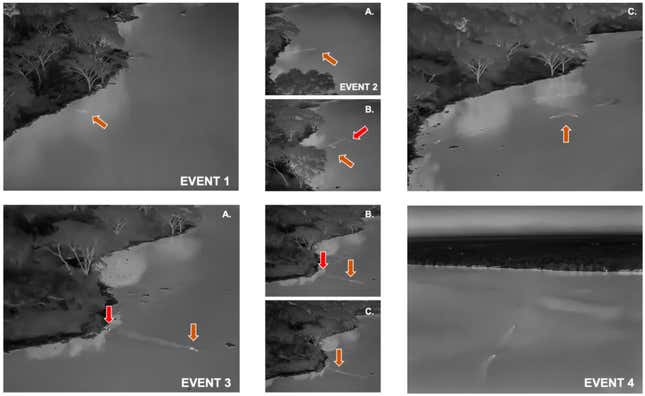As evening fell in Uganda’s second-largest nationwide park in early February, Jacob, a three-legged African lion, made a number of makes an attempt to cross the damaging canal along with his brother Tibu.
Most likely resulting from a scarcity of lionesses and a “sturdy” human presence on the one obtainable land space, two lions repeatedly entered the Kazinga Channel in the dead of night. They returned thrice, “presumably resulting from encounters with both hippopotamuses or Nile crocodiles,” the researchers wrote in a forthcoming paper accepted within the scientific journal Ecology and Evolution.
On their fourth try, the siblings efficiently swam 1.5 kilometers, or 0.93 miles, to achieve the opposite aspect, in what the researchers referred to as “the primary long-distance visible swimming occasion recorded for this species.”
In response to the newspaper, Jacob accomplished the crossing regardless of shedding his leg in a poacher’s lure. Researchers filmed the journey simply after 22:00 native time utilizing an H20T thermal imaging digicam and a DJI Matrice 300 drone, sustaining a distance of 50-70 meters, or about 200 toes.
Griffith College scientist Alexander Braczkowski led an expedition to Uganda’s Queen Elizabeth Nationwide Park with funding from Queensland, Australia’s Griffith College and Northern Arizona College. “It was fairly dramatic,” Braczkowski instructed the journal. The newspaper “New York Instances. The lions look “like two tiny warmth signatures crossing the ocean,” he stated, commenting on footage captured by Cape City-based videographer Luke Ochse.

In response to the article, individuals have documented African lions making shorter water journeys, normally no additional than 100 meters, or about 0.06 miles. Members of weak species will not be recognized to be superb swimmers. Jaguars, however, are “well-known for his or her capability to swim in wetlands such because the Pantanal and floodplain forests of Brazil,” the researchers word.
Past Jacob and Tibou’s quest for intercourse and territory, the swim displays how “the planet’s most endangered and iconic wildlife are going through troublesome choices below rising strain from people,” the researchers say. “Swimming by rivers and our bodies of water stuffed with excessive densities of predators is one such instance.” The researchers concluded the paper with a name for additional analysis into the connection between lengthy swims and practical habitat for giant cats in more and more human-dominated areas.
